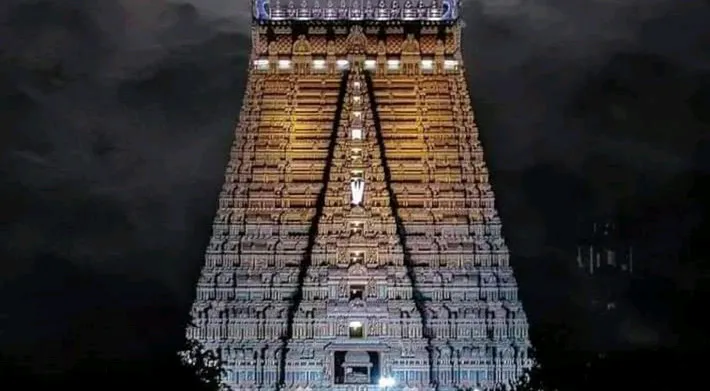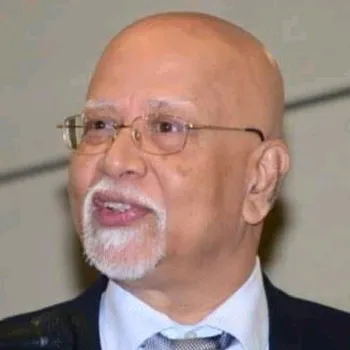Monsoon murmurs (10)
Pilliyar koil alias Ganesha mandir was on the way to the school. Amma told him to worship Him before entering the school as He is Vigneswsra, the remover of obstacles. Worshipping is simple, hold both your ears cross way and go down and up using your knee three times. More the better but three the minimum. This technique is referred as 'brain yoga' by Americans as it improves your memory. But Nandu had no idea about it but would love to do it.
If he is lucky somebody will break a coconut for Ganesha as He has fulfilled his wish. Breaking a coconut in to pieces is an art. When this happens the children near by will gather to collect the broken pieces. If the devotee has no previous experience he would break the coconut in to one or two pieces which is good for the kids as one gets substantial portion of the thengai or coconut but if the guy is strong and experienced he would break the coconut in to pieces. Since it is done with such force, the pieces will scatter all around and hence called "sathir thengai" in Tamil. If Nandu was lucky he would get a big piece, a snack to cherish on the way to school. Perumal koil or the temple of Sriman Narayan is near by too. It will offer delicious pongal, puliyodharai, vadai, thayir sadam on special occasions. But pillaiyar is children's god, as the name implies, and easy to approach and offer prayers even in a hurry.
That little village has three big temples. One for Sriman Narayan, one for Mahadev or Shiva and another for Skanda or Subramanya. Each one has their own festivity and celebration depends on the Tamil calendar.
Hindus have no dearth of Gods. Though in reality only three are important and others are called Devas, the intermediary. The undifferentiated Self called Brahman differentiates itself in to three Brahma, Vishnu, Siva for the act of creation, protection and destruction. Among the three the worship of Brahma the creator has been abandoned in India for long but worshipped in Thailand, Cambodia and Indonesia still. The dominant deities of worship became Vishnu and Siva. So temples were constructed for these Gods all over India, around two million temples, roughly. Interestingly, 79.154% of temples are in Tamilnadu, indicating this part of India was leading the divine way for rest of India for time immemorial.
Why do you have so many Gods ask other religions? Fact is very simple. Even in the very early history of Tamilagam, God had been defined as a metaphor. A symbol to represent a philosophy, a myth, a moral story or simply a mental focal point for personal growth. A Hindu has a free choice of selecting one or many as the situation demands. For example, Nandu's favourite god is Goddess of knowledge named Saratwati. Hindus can worship God either as male or female, a freedom to choose.
There is a one God concept as well. Sriman Narayan is often called the primordial one, the 'athi purusha' or 'Para Brahmam' from where all the others emerged. His temples are called perumal koil, the temple of the eldest among Gods. The early vedic literature was not clear in naming this primordial entity. Only ancient Tamil literature clarifying this point and are referred as Dravida Veda. Hence the biggest temple in Tamilnadu was constructed for him in Sri rangam. Much bigger temple complex was constructed for Vishnu worship in Cambodia called Angkor Wat. The perumal koil in that town was inherited by Nandu's uncle. The Vishnu worshippers are called Vaishnavites. They have their own Dravida Veda.
Siva worship is much old too anthropologically. The early Hindus symbolized the primary instinct of reproduction in the form of a linga which in fact is a vagina and penis in unison. The linga representing the penis and avudaiyar representing the vagina. But people know nothing of it and worship for peace and stability.
Nandu after worshipping Pillaiyar would pass through a narrow lane to school. A female was urinating. Usually, they urinate by sitting as they don't have a long organ to direct the urine as the males do. Since it was a small lane and not much space to sit and ease, she was doing it in the men's style. Naturally, it was a mess. A passersby male ridiculed her for her act of absurdity. She was furious as well replying it was urgent and she had no other choice. Such scenes are rare but absurdity is part of a Tamil's life in that village.
Nandu had a good reason to visit school because he had a new girl friend, the daughter of a deputy station master of the railways. She was as pretty as Vaijayanthimala, a well known actress on those days. Nandu was fascinated by her new presence in the school. Some other children were not so lucky as Nandu. They were chained with a wooden piece in one of their legs to drag to the school. These children are known to skip the school for their own reasons. They were beaten up heavily by teachers in the school. Child violence was common as parents believed beating brings discipline. Nandu was scarred of those teachers who torture students. However, presence of Latha her new girl friend made the school a heaven
(to be continued)
© nanu
If he is lucky somebody will break a coconut for Ganesha as He has fulfilled his wish. Breaking a coconut in to pieces is an art. When this happens the children near by will gather to collect the broken pieces. If the devotee has no previous experience he would break the coconut in to one or two pieces which is good for the kids as one gets substantial portion of the thengai or coconut but if the guy is strong and experienced he would break the coconut in to pieces. Since it is done with such force, the pieces will scatter all around and hence called "sathir thengai" in Tamil. If Nandu was lucky he would get a big piece, a snack to cherish on the way to school. Perumal koil or the temple of Sriman Narayan is near by too. It will offer delicious pongal, puliyodharai, vadai, thayir sadam on special occasions. But pillaiyar is children's god, as the name implies, and easy to approach and offer prayers even in a hurry.
That little village has three big temples. One for Sriman Narayan, one for Mahadev or Shiva and another for Skanda or Subramanya. Each one has their own festivity and celebration depends on the Tamil calendar.
Hindus have no dearth of Gods. Though in reality only three are important and others are called Devas, the intermediary. The undifferentiated Self called Brahman differentiates itself in to three Brahma, Vishnu, Siva for the act of creation, protection and destruction. Among the three the worship of Brahma the creator has been abandoned in India for long but worshipped in Thailand, Cambodia and Indonesia still. The dominant deities of worship became Vishnu and Siva. So temples were constructed for these Gods all over India, around two million temples, roughly. Interestingly, 79.154% of temples are in Tamilnadu, indicating this part of India was leading the divine way for rest of India for time immemorial.
Why do you have so many Gods ask other religions? Fact is very simple. Even in the very early history of Tamilagam, God had been defined as a metaphor. A symbol to represent a philosophy, a myth, a moral story or simply a mental focal point for personal growth. A Hindu has a free choice of selecting one or many as the situation demands. For example, Nandu's favourite god is Goddess of knowledge named Saratwati. Hindus can worship God either as male or female, a freedom to choose.
There is a one God concept as well. Sriman Narayan is often called the primordial one, the 'athi purusha' or 'Para Brahmam' from where all the others emerged. His temples are called perumal koil, the temple of the eldest among Gods. The early vedic literature was not clear in naming this primordial entity. Only ancient Tamil literature clarifying this point and are referred as Dravida Veda. Hence the biggest temple in Tamilnadu was constructed for him in Sri rangam. Much bigger temple complex was constructed for Vishnu worship in Cambodia called Angkor Wat. The perumal koil in that town was inherited by Nandu's uncle. The Vishnu worshippers are called Vaishnavites. They have their own Dravida Veda.
Siva worship is much old too anthropologically. The early Hindus symbolized the primary instinct of reproduction in the form of a linga which in fact is a vagina and penis in unison. The linga representing the penis and avudaiyar representing the vagina. But people know nothing of it and worship for peace and stability.
Nandu after worshipping Pillaiyar would pass through a narrow lane to school. A female was urinating. Usually, they urinate by sitting as they don't have a long organ to direct the urine as the males do. Since it was a small lane and not much space to sit and ease, she was doing it in the men's style. Naturally, it was a mess. A passersby male ridiculed her for her act of absurdity. She was furious as well replying it was urgent and she had no other choice. Such scenes are rare but absurdity is part of a Tamil's life in that village.
Nandu had a good reason to visit school because he had a new girl friend, the daughter of a deputy station master of the railways. She was as pretty as Vaijayanthimala, a well known actress on those days. Nandu was fascinated by her new presence in the school. Some other children were not so lucky as Nandu. They were chained with a wooden piece in one of their legs to drag to the school. These children are known to skip the school for their own reasons. They were beaten up heavily by teachers in the school. Child violence was common as parents believed beating brings discipline. Nandu was scarred of those teachers who torture students. However, presence of Latha her new girl friend made the school a heaven
(to be continued)
© nanu




